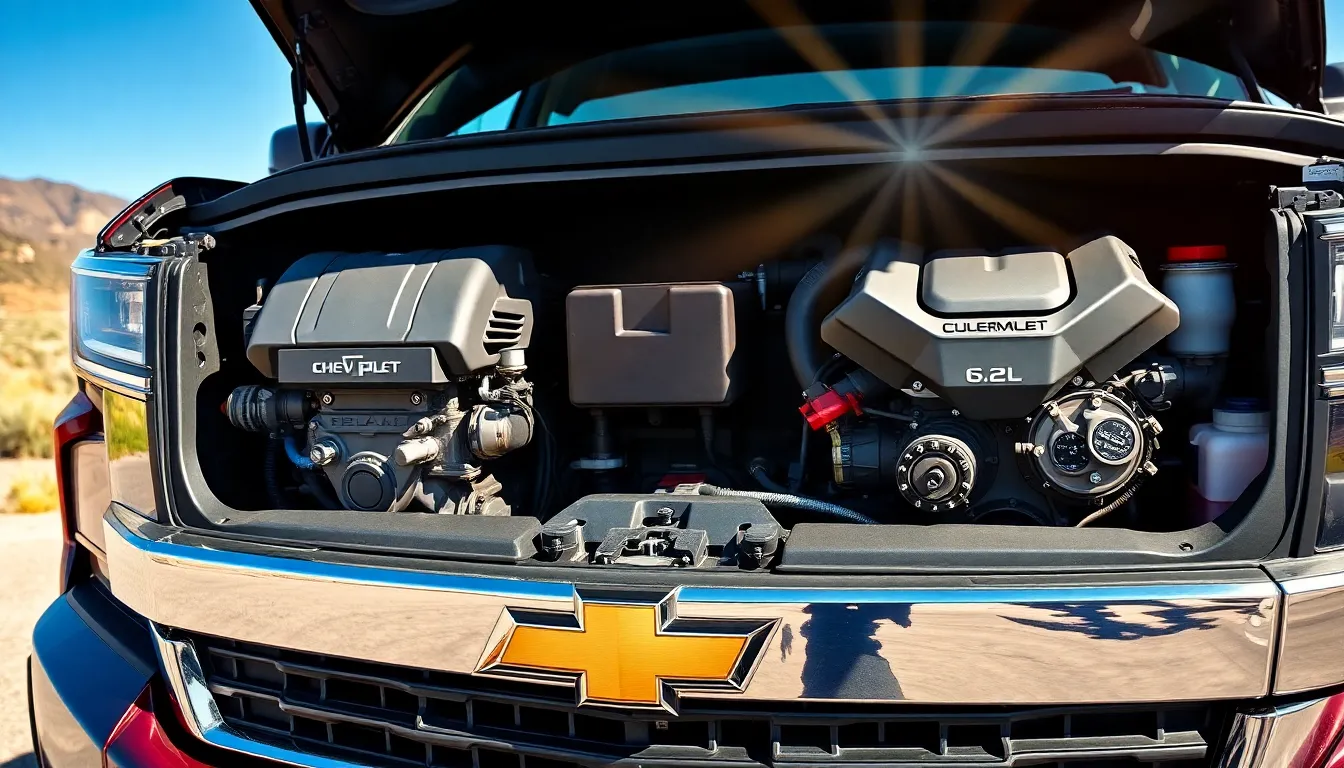When comparing the 3.0 Duramax vs 6.2 engines, which powerplant truly deserves your hard-earned money? This decision can make or break your truck ownership experience.
The battle between Chevy’s 3.0L Duramax diesel and the robust 6.2L V8 gasoline engine represents one of the most important choices for truck buyers today. You’re not just selecting an engine—you’re choosing between two distinct driving experiences, each with important implications for towing capacity, fuel efficiency, and long-term ownership costs. Whether you’re hauling heavy loads or seeking the perfect daily driver, understanding these powerhouse options will help you make the right investment for your exact needs.
Understanding the 3.0 Duramax and 6.2 GM Engines
The 3.0L Duramax diesel and 6.2L V8 gasoline engines represent two distinct approaches to power in GM’s truck lineup. Each engine offers unique characteristics that appeal to different types of truck owners, from daily commuters to serious haulers.
The 3.0L Duramax turbo-diesel is GM’s newest addition to their diesel lineup, featuring an inline-six configuration that delivers 277 horsepower and 460 lb-ft of torque. This powerplant combines modern diesel technology with impressive fuel efficiency, achieving up to 30 mpg highway in some configurations. Its torque curve peaks at just 1,500 RPM, providing excellent low-end pulling power for towing and hauling tasks.
In contrast, the 6.2L V8 gasoline engine produces 420 horsepower and 460 lb-ft of torque, making it the most powerful gas engine option in GM’s full-size trucks. This naturally aspirated V8 delivers immediate throttle response and a characteristic rumble that diesel engines can’t match. Many truck enthusiasts, like Tom from Colorado, praise the 6.2L for its smooth power delivery on mountain roads, noting “it’s got plenty of punch even at altitude where other engines struggle.”
Fuel economy differs significantly between these two engines. The Duramax diesel consistently returns 20-30% better fuel economy than its gasoline counterpart, with many owners reporting real-industry figures of 23-26 mpg in mixed driving conditions. The 6.2L V8, while thirstier at 15-17 mpg combined, runs on regular gasoline rather than diesel fuel, which can be harder to find at some stations and typically costs more per gallon.
Maintenance requirements also vary between these powerplants. The 3.0 Duramax requires diesel exhaust fluid (DEF) refills, more expensive oil changes, and specialized maintenance that can increase ownership costs. The 6.2L V8 follows more conventional maintenance schedules but consumes more fuel during operation. Both engines are paired with GM’s 10-speed automatic transmission, providing smooth shifts and optimized performance across their power bands.
Performance Comparison: 3.0 Duramax vs 6.2 V8
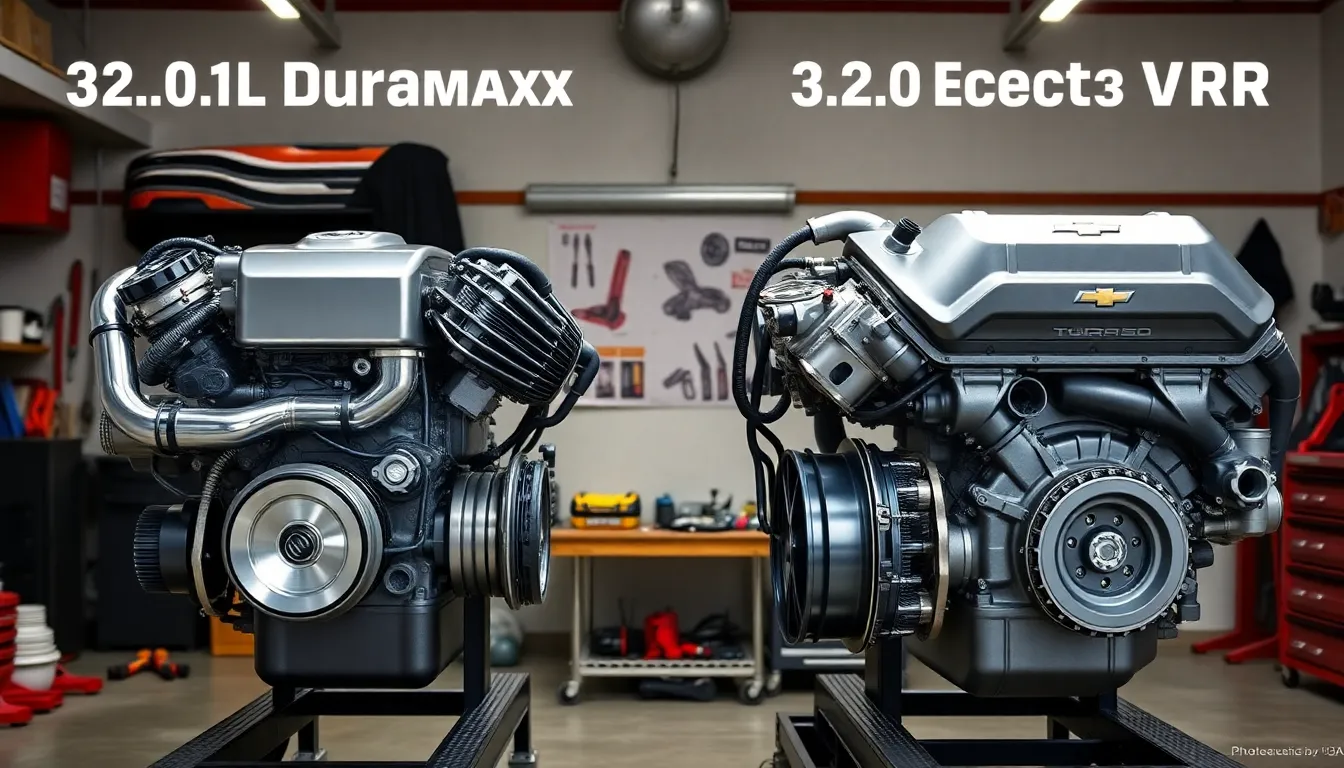
The 3.0 Duramax and 6.2 V8 engines offer distinct performance profiles that cater to different driving needs and preferences. Their specifications reveal important differences in power delivery, towing capabilities, and overall performance characteristics.
Horsepower and Torque Specifications
The 6.2L EcoTec3 V8 delivers impressive raw power with approximately 420 horsepower and 460 lb-ft of torque. This robust engine creates the signature throaty exhaust note that V8 enthusiasts crave while providing strong acceleration across the power band. Drivers appreciate the immediate throttle response that makes merging onto highways or passing other vehicles feel effortless.
The 3.0L Duramax Diesel inline-6 produces about 305 horsepower but excels with its superior torque output of approximately 495 lb-ft. This torque advantage comes into play at lower RPMs, giving you exceptional pulling power right when you need it most. The diesel’s power delivery feels distinctly different—less dramatic but more consistent and assured, especially when loaded.
Acceleration and Towing Capacity
The 6.2L V8 engine offers quicker acceleration, sprinting off the line with authority thanks to its higher horsepower rating. Highway passing maneuvers happen with minimal effort, and the engine’s sporty nature makes it feel more nimble even though the vehicle’s size. Many drivers enjoy the commanding presence this powertrain provides in traffic situations.
Towing performance shows interesting nuances between these powerplants. The 3.0L Duramax diesel provides slightly higher maximum towing capacity at 13,300 lbs compared to the 6.2 V8’s 13,100 lbs. This diesel advantage comes from its torque-rich profile that maintains steady pulling power on long grades or when hauling heavy loads. The Duramax also operates more quietly and smoothly under load, reducing driver fatigue during extended towing sessions.
| Feature | 3.0L Duramax Diesel | 6.2L EcoTec3 V8 |
|---|---|---|
| Horsepower | 305 hp | 420 hp |
| Torque | 495 lb-ft | 460 lb-ft |
| Towing Capacity | 13,300 lbs | 13,100 lbs |
| Fuel Economy | 20 mpg city / 24 mpg highway | 14 mpg city / 18 mpg highway |
| Acceleration | Torque-focused, steady power | Faster, more responsive |
| Driving Experience | Quieter, smoother operation | Bold exhaust note, sportier feel |
Fuel efficiency stands out as a major differentiator between these engines. The 3.0L Duramax achieves approximately 20 mpg in city driving and 24 mpg on highways, significantly outperforming the 6.2 V8’s 14 mpg city and 18 mpg highway ratings. This efficiency advantage translates to fewer fuel stops and reduced operating costs, particularly for high-mileage drivers or those using their trucks for business purposes.
Fuel Economy and Efficiency
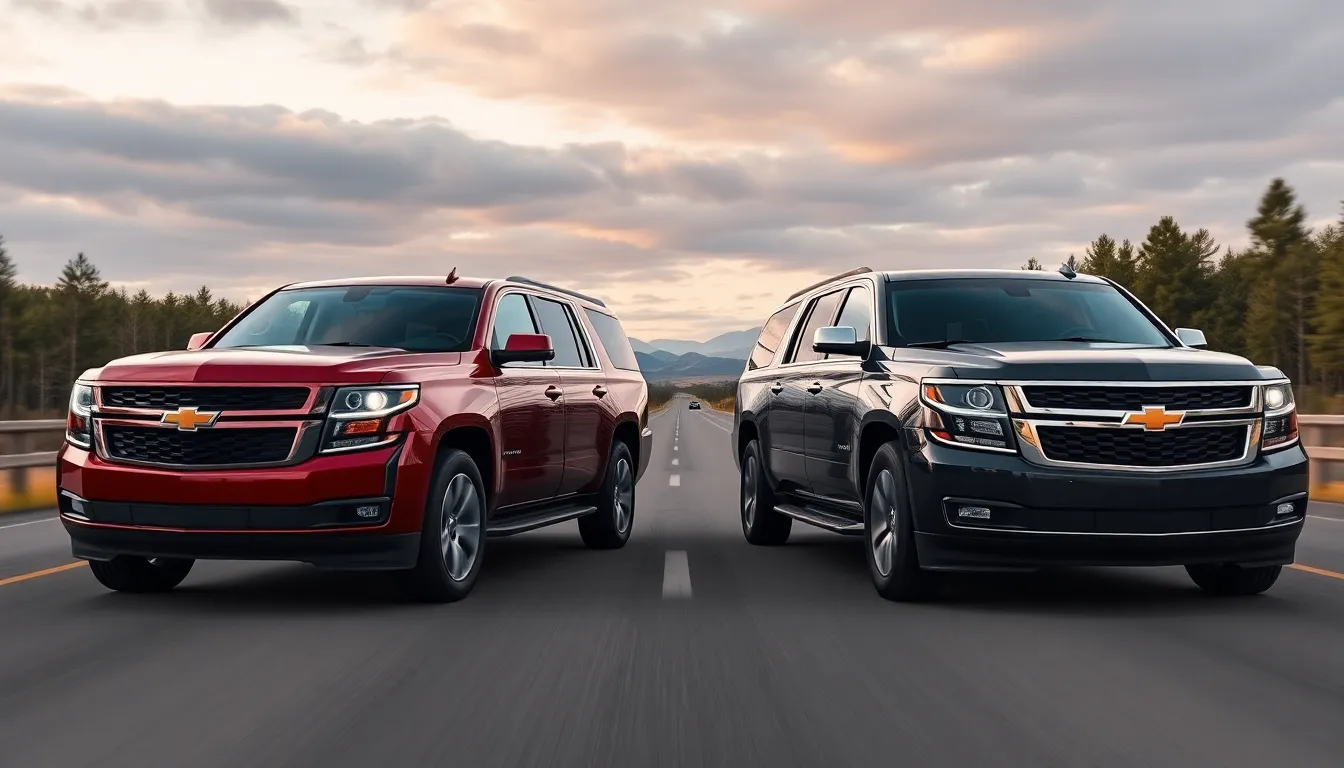
The 3.0L Duramax diesel and 6.2L V8 gas engines present stark differences in fuel economy that directly impact your operating costs. These efficiency variations become particularly noticeable during different driving conditions and can significantly affect your ownership experience.
City and Highway MPG Ratings
The 3.0 Duramax diesel delivers substantially better fuel efficiency across all driving scenarios compared to its V8 counterpart. EPA estimates for the diesel engine in 2025 Chevrolet Tahoe and Suburban models show approximately 20 MPG city and 24 MPG highway ratings. This efficiency comes while still providing impressive performance with 305 horsepower and class-leading 495 lb-ft of torque. Contrast this with the 6.2L gas V8, which achieves roughly 14 MPG city and 18 MPG highway even though its higher 420 horsepower output. The diesel engine averages about 7 miles per gallon more than the 6.2 V8 across typical driving conditions, creating a important efficiency gap between the two powerplants.
| Engine | City MPG | Highway MPG | Horsepower | Torque (lb-ft) |
|---|---|---|---|---|
| 3.0 Duramax Diesel | 20 | 24 | 305 | 495 |
| 6.2L Gas V8 | 14 | 18 | 420 | 460 |
Real-Industry Fuel Consumption
Many drivers report even more dramatic efficiency differences than official ratings suggest when using these engines in everyday conditions. Diesel owners frequently achieve mid to high 20s MPG, with some reporting averages around 27 MPG after extended driving periods. Several customers have noted nearly doubling their fuel economy after switching from V8 gas engines to the Duramax diesel. The 6.2L V8, while delivering exceptional throttle response and acceleration, typically averages around 15 MPG in mixed driving scenarios. This performance-oriented engine burns noticeably more fuel during similar driving conditions compared to its diesel counterpart. Though diesel vehicles carry a slight weight disadvantage, their superior torque and efficient combustion characteristics more than compensate during real-industry operation, especially during highway cruising and long-distance travel.
Reliability and Maintenance Considerations
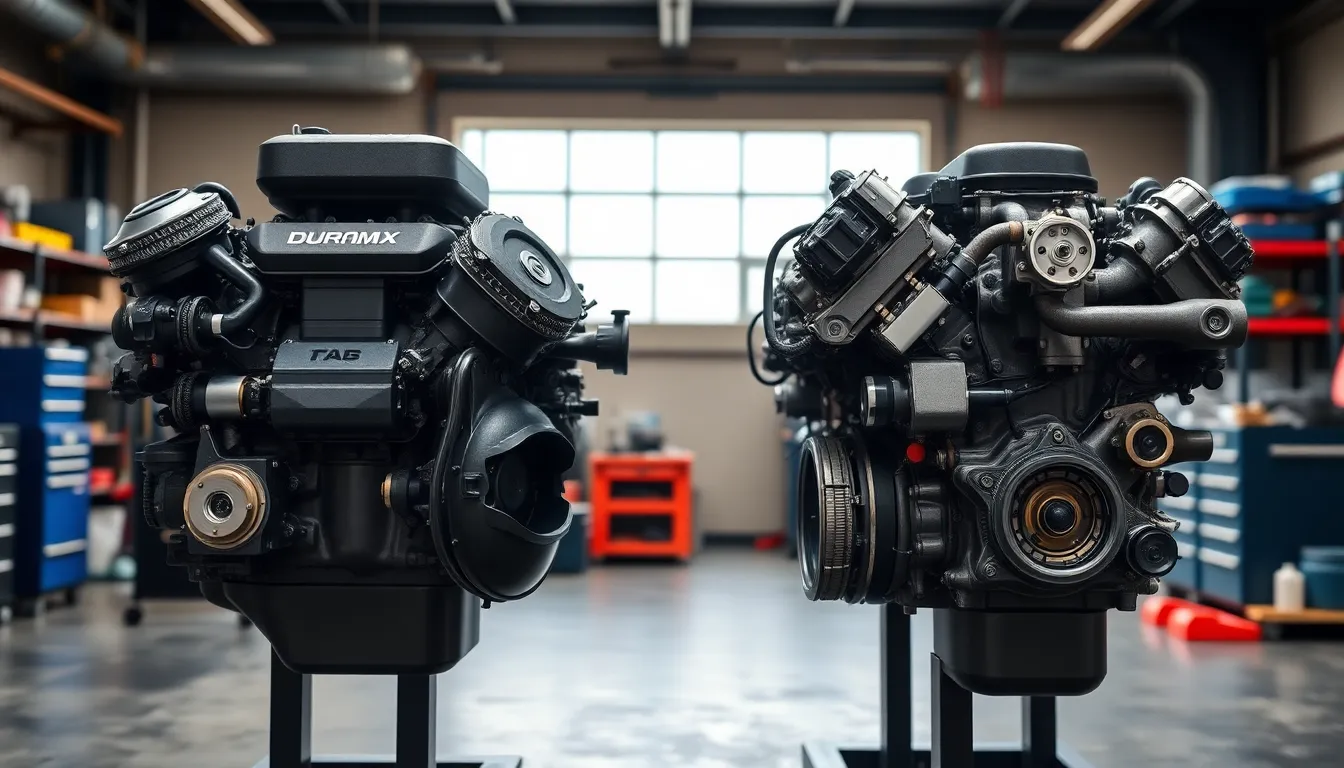
The 3.0L Duramax diesel and 6.2L V8 gas engines differ significantly in their reliability profiles and maintenance requirements. Understanding these differences helps you make an well-informed choice based on your long-term ownership plans and usage patterns.
Common Issues and Longevity
The 3.0L Duramax diesel engine features an inline 6-cylinder turbocharged design that’s built to handle higher compression ratios and pressures. This robust construction typically translates to extended engine life, with many diesel engines comfortably surpassing the 200,000-mile mark when properly maintained. Diesel-exact issues like soot accumulation, turbocharger wear, and clogged diesel particulate filters (DPF) can occur without appropriate maintenance. The Duramax’s design prioritizes durability for heavy-duty applications, making it particularly suitable for consistent towing or hauling.
The 6.2L V8 gas engine offers mechanical simplicity that many owners appreciate. Its naturally aspirated design eliminates turbocharger-related concerns but introduces more typical gasoline engine wear points. Common maintenance items include spark plug replacements, ignition coil servicing, and fuel system upkeep. While generally reliable for everyday use, the 6.2L V8 might not demonstrate the same longevity as the Duramax when regularly subjected to heavy loads or towing near capacity limits.
Maintenance Costs and Service Intervals
Maintaining the 3.0L Duramax involves more specialized service requirements and potentially higher costs per maintenance visit. Oil changes typically occur at longer intervals—around 10,000 miles—but cost more due to larger oil capacity and diesel-exact formulations. Additional maintenance considerations include diesel exhaust fluid (DEF) replenishment, fuel filter changes, and emissions system servicing. The important fuel economy advantage (20-27 mpg compared to the V8’s 6-9 mpg in typical driving conditions) often offsets these higher maintenance expenses for high-mileage drivers.
The 6.2L V8 follows more conventional maintenance schedules with oil changes recommended every 5,000-7,500 miles. Service costs per visit are generally lower due to more widely available parts and simpler systems. Routine maintenance typically includes air filter replacement, spark plug service (at longer intervals), and standard fluid checks. Fuel costs represent the most important ongoing expense for V8 owners, with its thirstier nature requiring more frequent fill-ups even though lower per-service maintenance expenses.
Each engine presents distinct reliability characteristics that align with different ownership priorities—the Duramax excels in longevity and efficiency for high-mileage or heavy-duty use, while the 6.2L V8 offers simpler maintenance for those who prioritize conventional service accessibility and lower per-visit maintenance costs.
Applications and Vehicle Availability
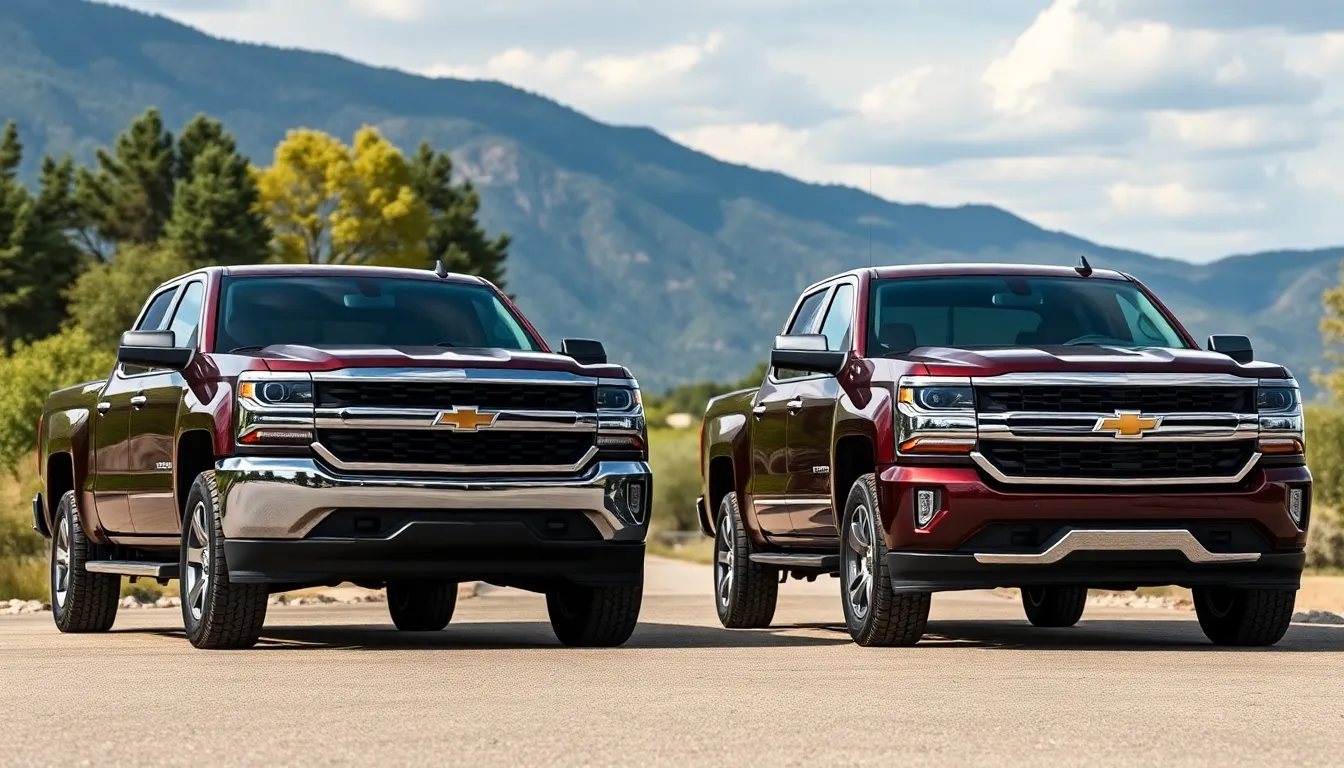
Both the 3.0L Duramax diesel and 6.2L V8 gas engines are available across multiple platforms in the Chevrolet and GMC lineup. These powerplants serve different driving needs while maintaining their presence in similar vehicle categories.
Truck and SUV Models Featuring Each Engine
The 3.0L Duramax diesel engine comes standard in newer half-ton trucks including the Chevrolet Silverado 1500 and GMC Sierra 1500. You’ll also find this inline-six diesel option in the 2025 Chevrolet Tahoe and Suburban SUVs, giving families and adventurers a fuel-efficient option for longer journeys. This engine particularly appeals to buyers who prioritize torque delivery and fuel economy over raw horsepower.
The 6.2L V8 gas engine appears in many of the same vehicles as its diesel counterpart. Available in the Silverado 1500, Sierra 1500, and the refreshed 2025 Tahoe and Suburban models, this powerplant targets drivers seeking immediate acceleration and traditional V8 performance. Many truck enthusiasts choose this engine for its responsiveness and familiar power curve, especially those who value quick throttle response during everyday driving.
Both engines pair exclusively with GM’s refined 10-speed automatic transmission, optimizing their respective performance characteristics while maintaining similar vehicle platform compatibility. The versatility of these engines across the GM truck and SUV lineup gives buyers flexibility to select the powertrain that best matches their exact use case without limiting their vehicle options.
Price and Value Proposition
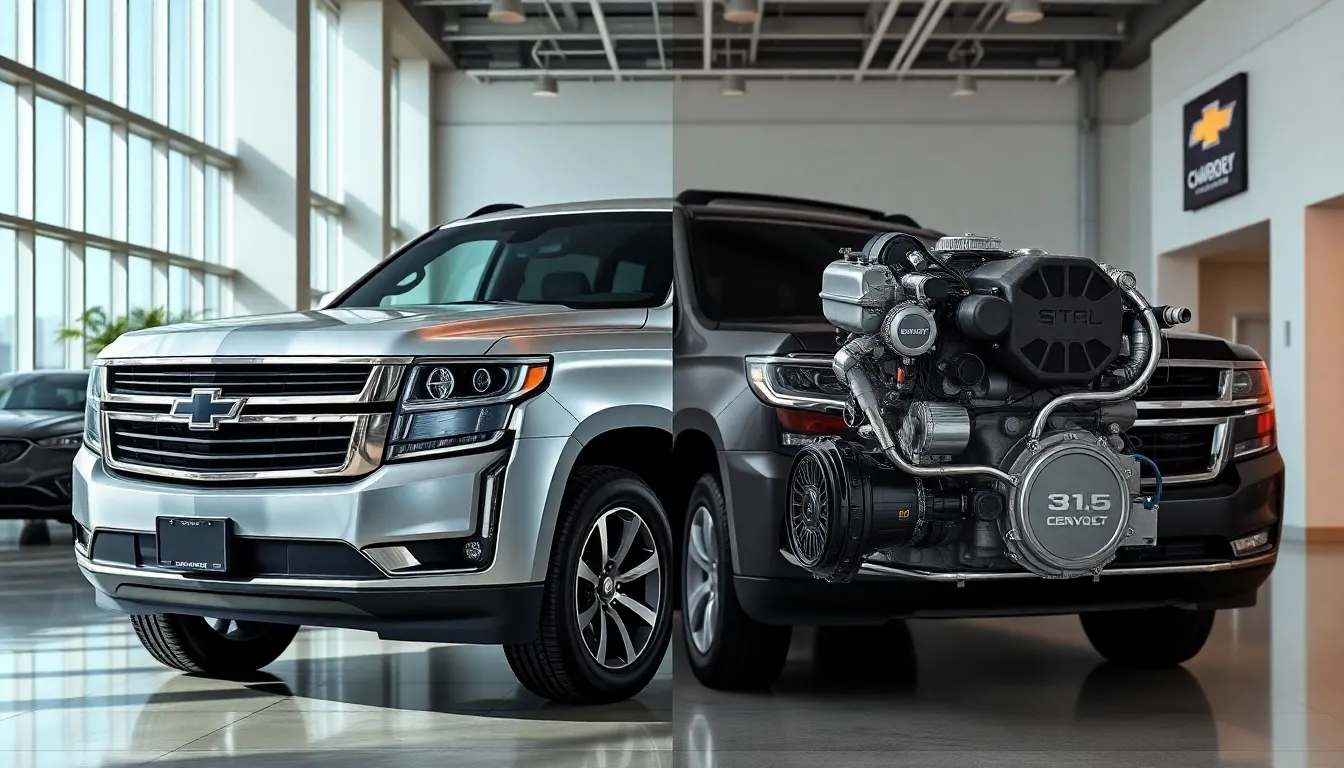
Price Comparison
The 3.0 Duramax diesel and 6.2L gasoline engines come with remarkably similar price tags in popular Chevrolet models. Looking at the 2025 Chevy Suburban High Country, the 6.2L gasoline V8 version costs around $92,520, while the Duramax diesel variant is priced at approximately $92,175. This minimal price difference makes the initial investment essentially the same regardless of which powertrain you choose.
Fuel Economy and Efficiency
Fuel efficiency represents a major advantage for the 3.0 Duramax diesel engine. It delivers approximately 20 mpg in city driving and 24 mpg on highways, outperforming the 6.2L gasoline engine by about 6 mpg overall. The 6.2L V8 typically achieves around 14 mpg city and 18 mpg highway. These important fuel savings translate into lower operating costs for diesel owners, especially those who rack up considerable mileage annually.
Performance and Towing Capacity
Each engine offers distinct performance characteristics customized to different driving preferences. The 6.2L V8 generates higher horsepower (around 420 hp) compared to the 3.0 Duramax (approximately 305 hp), providing more immediate power delivery. Torque output favors the diesel engine, with the Duramax producing roughly 495 lb-ft versus the V8’s 460 lb-ft, giving it an edge in towing situations.
Both engines demonstrate comparable towing capabilities, with the 6.2L V8 rated to pull about 7,900 lbs and the Duramax handling around 7,800 lbs. Payload capacity gives a slight advantage to the gasoline engine at 1,395 lbs compared to the diesel’s 1,266 lbs.
Value Proposition
The 3.0 Duramax diesel offers superior fuel efficiency, stronger torque for towing applications, and notably smoother, quieter operation. These benefits come with potential trade-offs including higher maintenance expenses and certain emission system considerations.
The 6.2L gasoline V8 provides greater horsepower, marginally better payload capacity, and typically lower maintenance costs. Its responsive acceleration delivers a more spirited driving experience, though at the expense of fuel economy.
Your choice between these engines eventually depends on personal priorities. If you value fuel savings and strong pulling power, the Duramax diesel proves more cost-effective over time even though similar upfront pricing. Drivers who prioritize raw power and quicker acceleration typically gravitate toward the 6.2L V8 for its traditional performance characteristics and simpler maintenance requirements.
Which Engine Is Right for You?
Your truck engine choice boils down to your exact driving needs and priorities. The 3.0 Duramax and 6.2 V8 each excel in different areas, making them suitable for different types of truck owners.
The 3.0 Duramax diesel shines for fuel-conscious drivers who still need substantial towing power. With its impressive 20 mpg city and 24 mpg highway fuel economy, it’s significantly more efficient than the 6.2 V8’s 14 mpg city and 18 mpg highway ratings. Long-distance drivers and those who tow frequently benefit from the diesel’s low-end torque of 495 lb-ft that peaks at lower RPMs, providing smooth, consistent pulling power.
Highway commuters appreciate the Duramax’s superior efficiency for daily driving. The diesel engine delivers its maximum torque at just 1,500 RPM, making it responsive when merging onto highways or climbing grades with a trailer. Its 7,800 lbs towing capacity handles most recreational needs like boats or camping trailers with ease.
Performance enthusiasts often gravitate toward the 6.2 V8 gasoline engine. Its 420 horsepower output (compared to the Duramax’s 305 hp) delivers noticeably quicker acceleration and more immediate throttle response. The V8’s higher payload capacity of 1,395 lbs versus the Duramax’s 1,266 lbs makes it better suited for hauling heavy items in the bed rather than towing.
Maintenance considerations play into your decision as well. The 6.2 V8 typically costs less to maintain with more widely available parts and service options. Diesel engines require specialized maintenance including fuel filters, water separators, and emissions systems not found on gasoline engines.
Climate factors into your engine selection too. The 6.2 V8 starts more reliably in extremely cold weather without needing block heaters or other cold-weather aids. Conversely, the Duramax diesel operates more efficiently in hot conditions and at high altitudes where gasoline engines lose some power.
Budget-conscious buyers should note the minimal price difference between these engines in many truck configurations, making the decision more about long-term costs than initial investment. The diesel’s fuel savings can offset its potential higher maintenance costs if you drive enough miles annually.
| Engine Feature | 3.0 Duramax Diesel | 6.2 V8 Gasoline |
|---|---|---|
| Horsepower | 305 hp | 420 hp |
| Torque | 495 lb-ft | 460 lb-ft |
| City Fuel Economy | 20 mpg | 14 mpg |
| Highway Fuel Economy | 24 mpg | 18 mpg |
| Towing Capacity | 7,800 lbs | 7,900 lbs |
| Payload Capacity | 1,266 lbs | 1,395 lbs |
Conclusion
Choosing between the 3.0L Duramax diesel and the 6.2L V8 gasoline engine eventually comes down to your exact needs. If fuel economy and towing are priorities you’ll appreciate the Duramax’s efficiency and low-end torque.
For those who value raw power quick acceleration and simpler maintenance the 6.2L V8 offers compelling advantages. With nearly identical price points your decision should focus on how you’ll use your truck day-to-day.
Consider your driving habits terrain requirements and long-term ownership plans. Both engines represent excellent engineering from Chevrolet giving you reliable performance regardless of which path you choose. The right choice is the one that best fits your lifestyle and driving demands.
Frequently Asked Questions
Which engine offers better fuel economy, the 3.0L Duramax diesel or the 6.2L V8 gas?
The 3.0L Duramax diesel significantly outperforms the 6.2L V8 in fuel economy, delivering 20-30% better efficiency. The Duramax achieves approximately 20 mpg city and 24 mpg highway, compared to the 6.2L V8’s 14 mpg city and 18 mpg highway. For long-distance drivers, this difference can translate to substantial fuel savings over time.
How do the two engines compare in towing capacity?
The 3.0L Duramax diesel has a slightly higher maximum towing capacity at 13,300 lbs compared to the 6.2L V8’s 13,100 lbs. While the difference is minimal, the diesel engine’s low-end torque makes the towing experience smoother and often more controlled, especially when pulling heavy loads up inclines.
Which engine is better for daily driving?
This depends on your priorities. The 6.2L V8 offers quicker acceleration and more immediate throttle response, making it feel more powerful in everyday driving situations. The 3.0L Duramax diesel provides better fuel economy and smoother operation with its substantial torque at lower RPMs, making it excellent for relaxed cruising and commuting.
What are the maintenance differences between these engines?
The 3.0L Duramax diesel requires more specialized maintenance including diesel-specific services like fuel filter changes and using diesel exhaust fluid (DEF). While it’s built for durability, service costs tend to be higher. The 6.2L V8 gasoline engine offers simpler, more conventional maintenance with generally lower service costs and wider availability of qualified technicians.
Is there a significant price difference between trucks with these engines?
Surprisingly, there’s minimal difference in initial purchase price. For example, in the 2025 Chevy Suburban High Country, the 6.2L V8 version costs around $92,520, while the Duramax diesel variant is priced at approximately $92,175. The choice comes down more to operating costs and performance preferences than upfront investment.
How do these engines perform in cold weather?
The 6.2L V8 gasoline engine typically starts more easily in extreme cold without additional equipment. The 3.0L Duramax diesel may require engine block heaters in very cold climates, though modern diesel engines have vastly improved cold-weather performance compared to older models. Consider your climate when making your decision.
Which engine has better reliability and longevity?
The 3.0L Duramax diesel is engineered for longevity and often exceeds 200,000 miles with proper maintenance. Diesel engines typically have stronger internal components to handle higher compression ratios. The 6.2L V8 is also reliable but may not match the diesel’s extreme longevity. Both engines will serve well with proper care.
Does either engine offer advantages for resale value?
Diesel engines typically retain value better than gasoline engines in the truck market. The 3.0L Duramax diesel may command a premium when selling or trading in, especially in markets where diesel trucks are in demand. However, this advantage can vary by region and market conditions at the time of sale.
